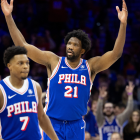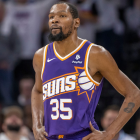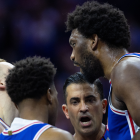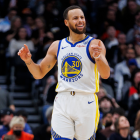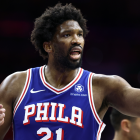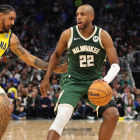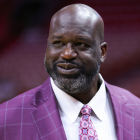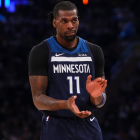The nine-year, $24 billion broadcast and digital rights agreements that the NBA announced Monday put the sport in a new economic stratosphere. They also set the stage for a fascinating negotiation on how the massive windfall will change the dynamic when it is baked into the owner-player split in the coming years.
With TV and digital revenue more than tripling over the eight-year, $7.4 billion agreements that expire after the 2015-16 season, the financial landscape of the sport will be forever transformed. According to team executives who have crunched the numbers, the windfall could result in a $91.2 million salary cap in 2016-17 -- when LeBron James and Kevin Durant are due to be free agents. That's up from $63.065 million for this coming season and $58.679 million in 2013-14.
That's right, the cap jumped 7.5 percent for 2014-15, indicating that the league has been making more money that expected under the 2011 CBA even before the lucrative new TV deals were finalized.
Basketball-related income -- the revenue pie that determines player salaries -- could jump to $6.7 billion in '16-'17, league sources said. That's up from an estimated $4.5 billion this past season and a $4.7 billion projection for 2014-15.
No wonder James, commenting to reporters Monday after the announcement, said there's "no way" owners will be able to cry poverty in the next labor negotiation, which could happen (and almost certainly will) as soon as 2017. Such a stance, James said, "will not fly with us this time."
With this windfall, a line in the sand between owners and players has been established -- prompting some players, like Nets star Deron Williams, to go into lockout mode.
"I hope guys are preparing," Williams, the Nets' player representative, told reporters Monday.
Individual max contracts for players with 10 or more years of service would start at $28.2 million in 2016-17 based on these projections and calculations negotiated in the 2011 CBA. This explains why James signed a two-year deal with a player option for 2015-16 when he returned to the Cleveland Cavaliers as a free agent this past summer. James' current max deal pays him $20.64 million this season. Other prospective free agents such as Kevin Love, LaMarcus Aldridge and Marc Gasol are expected to take the same approach to maximize their earnings under the new TV deals.
"Our game has never been better," commissioner Adam Silver said in announcing the new agreements.
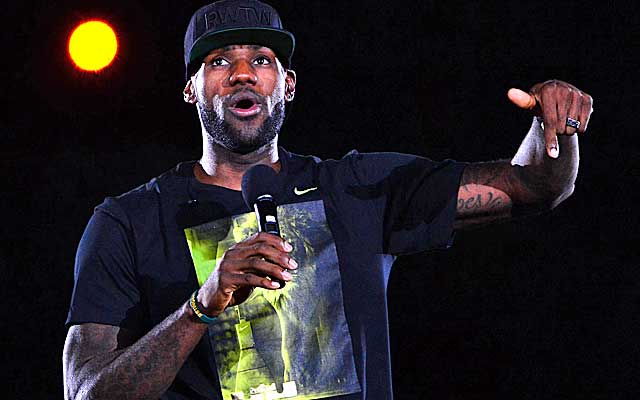
Quite a contrast from the rhetoric of the 2011 lockout, when Silver hammered the owners' talking points that the NBA could not continue to operate without a massive reduction in the players' share of revenue. The players' guaranteed share of BRI -- which totaled $3.8 billion in 2010-11 -- went from 57 percent under the previous collective bargaining agreement to a cap of 51 percent under the current labor deal.
"There's never been a better time to be an owner of an NBA team," said Washington Wizards owner Ted Leonsis, chairman of the owners' media committee.
Whether the NBA's ongoing financial windfall has been the direct result of the new economic system established in 2011 or is merely a sign that such dramatic reductions in the players' share wasn't necessary will depend, of course, on which side of that table you find yourself sitting. Though even James admitted Monday that "both sides kind of benefited" from the 2011 labor deal, which not only reduced the players' share but also imposed massive luxury-tax penalties on teams that overspend.
Both Silver and Leonsis dodged the question of whether all 30 teams are expected to be profitable by the time the owners and players can opt out of the current CBA in 2017.
"I’m sure both sides will be studying this new deal and seeking to assure that it remains a fair deal to both sides," Silver said.
The next frontier, according to a person with intimate knowledge of the league's labor negotiations, is an old frontier: a hard cap. With so much money entering the system, some owners might want to "push for a hard cap even further," the person said. Owners may also push for spending exceptions, such as the two-tiered mid-level exception and the bi-annual exception, to become things of the past. With the cap going from $63 million to $91 million, who needs exceptions, the league might argue? To which the players might respond: With so much money coming in, who needs a cap at all?
Of course, National Basketball Players Association executive director Michele Roberts weighed in with a statement Monday, saying that the new broadcast deals were "good news for all of the stakeholders in the business of the NBA." But she added, "Our job will be to ensure that the players receive their fair share ... and that we do everything possible to maintain the growth and popularity of the game."
In return for a hard cap, one NBA labor expert predicted that the league might offer to increase the players' share of revenues as a bargaining chip to achieve the only victory it was not able to check off during the 2011 lockout: an NFL-style hard cap. As the NBA's commissioner emeritus, David Stern, might say, life is a negotiation.
Any and all such changes in how BRI is computed and how players are paid must be bargained between the league and union. So, too, must any possible phasing in of the new TV revenues in 2015-16, which would minimize the impact of a massive increase in the salary cap. For example, if the NBA and union agreed to phase in $800 million of future TV and digital revenues into the 2015-16 BRI calculations, the cap for that season would jump to $75.8 million and would still increase dramatically in '16-'17 -- though the effects would be cushioned by the phase in. To do that, the CBA would have to be amended.
The players, of course, have no incentive to agree to receive this windfall in any manner other than what is written in the CBA. Which means there will be a very interesting negotiation to be had before the actual negotiation on a new labor deal begins in 2017 (assume the owners or players opt out.)
Some of the steep arc in revenue and cap increases could be minimized organically by how the new broadcast rights deals are structured. The total package is worth, on average, $2.7 billion per year, compared to $930 million annually under the deal that expires after the 2015-16 season. But there is no information yet on where new agreements begin and where they end. In other words, if the league and networks started the payments at $2.25 billion annually and increased them by about $100 million a year for eight years, it would result in a much more gradual rise in the cap. The devil, as always, in the details.
Regardless of how the sausage is made, everyone will benefit from the NBA's success and lucrative new broadcast deals -- the players, the owners and everyone remotely involved with either side. But figuring out how to satisfy everyone, as usual, will be intensely complicated.
All of these calculations are merely estimates based on the additional revenues and current methods for calculating the salary cap, luxury tax levels and player salaries. But the new landscape could be a boon to a vocal component of the agent community that has long argued that capping individual player salaries for the league's biggest stars was a mistake.
Think about it: If the NBA is worth nearly $2.7 billion annually to ABC, ESPN and Turner Sports, what is LeBron James worth to the NBA? Less than 1 percent of that? Please.
It's a very important discussion for another day -- such as July 1, 2017, when the owners and players could find themselves staring across the bargaining table at each other once again. The financial stakes -- and the distrust, it could be argued -- have never been higher.













